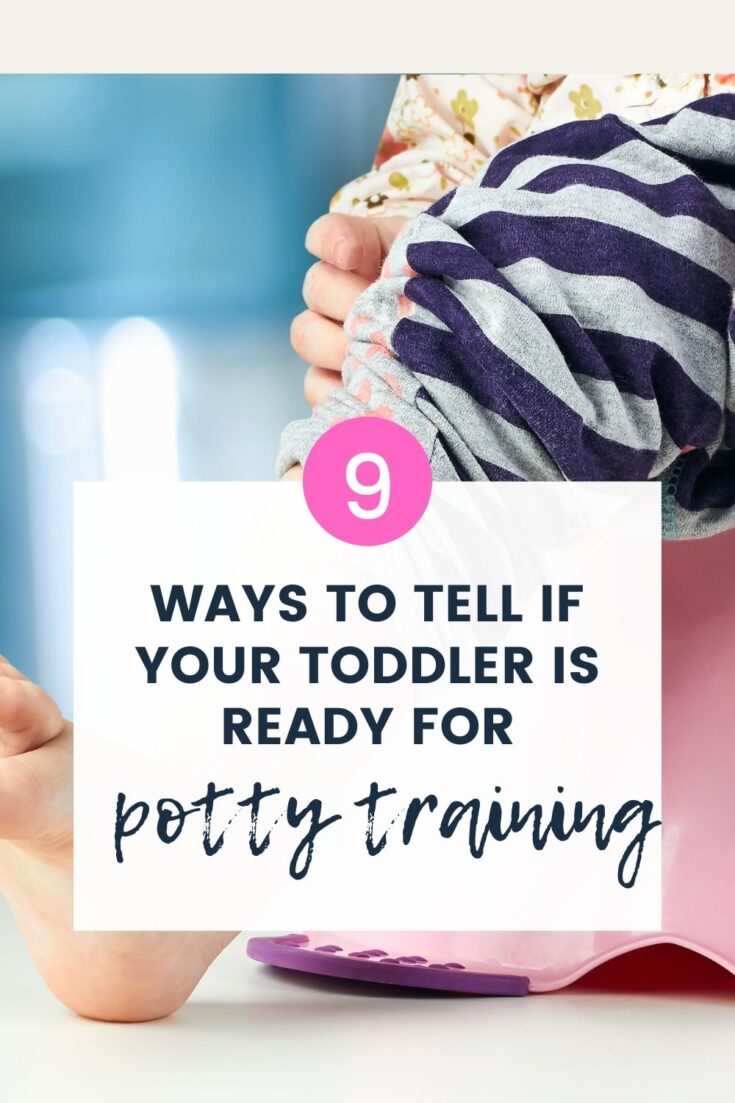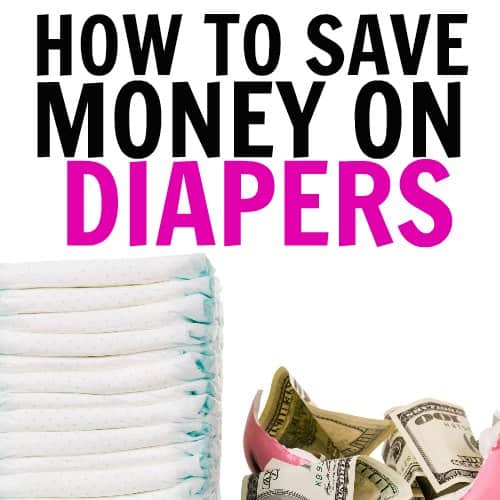Potty Training Readiness Checklist
This potty training readiness checklist will help you work out if it’s time to throw away the diapers or pull-ups and say hello to big kid underwear.
If you are wondering when is the right time for your child, this article will help answer that question and many more. Follow your child’s indicators and know that you’re on the path to successful potty training!
After all, t’s the moment we have all been waiting for – no more expensive diapers or smelly garbage pails.
We all want to potty train our kids once they are ready but how to know when its time? If you rush then the whole process just becomes painful and frustrating, wait too long and you can “miss the boat” and your child gets too comfortable in pull-ups.
Read on for 9 signs to look for when it comes to potty training.

This post may contain affiliate links. Please read my Disclosure for more information.
RELATED POSTS
Separation Anxiety in Babies & Toddlers- What You Need To Know
45 Questions To Ask A Home Daycare Provider {Free Printable}
Potty Training Readiness Checklist
When potty training begins, it is an important step for any family.
It can be stressful and messy but also rewarding to see your toddler make the transition from diapers into underwear.
Having a plan in place will help decrease messes by eliminating them completely-or at least reducing their frequency so you don’t have as many cleanups during cleanup time.
At What Age Should Your Start Potty Training?
That there is no set timeline for children when they’re ready and willing enough.
The age your toddler starts potty training varies from 2 years old all the way up until 4 or 5!
Some kids will start as early at 3, while others can take their time inching closer towards undies every day.
How To Know If Your Child Is Ready To Potty Train
You may be ready to put your toddler in training diapers at any time, but the best indication of when that will happen is going to come from their personality and age.
Some children are interested in potty training as soon as they can talk; others require much more patience before showing signs such like wanting help with changing clothes or constantly asking “are we there yet?”
Older siblings can help to speed the process along as toddlers often want to be seen as a “big kid”.
If you notice these behaviors then don’t forced it into happening – give them some space while also providing support for trying out underwear on family trips just so he/she has something better than pull-ups!
Potty Training Readiness Checklist

Here are the top 9 signs that your child is ready for toilet training.
1.They notice when they are wet.
Some toddlers hate being wet while others simply don’t care so this is one sign that you may or may not experience on the road to potty training.
If you notice that your toddler begins to pull at their diaper when they are wet or is uncomfortable in a soiled diaper, it’s time to buy a potty seat!
Take your kiddo to the store and let them help pick it out. This ensures the potty training kick off party is started properly.
REMEMBER: some toddlers will never care if they are wet and/or dirty. This isn’t the only sign of potty training readiness. There are plenty more!
2. They show an interest for the potty
The first thing most parents notice on their child’s potty training journey is that their toddler becomes much more interested in using the bathroom.
You may find your little one following you into a closed door, or even asking questions about what it means to “go” sometimes!
Some toddlers will strip down and run into the bathroom before they even know how to use the toilet. This is a sure sign they’re ready to at least attempt to toilet train.
This could also mean they’re ready for some independence and are trying out different ways of getting there themselves before accepting help from others- which would be great news because the more enthusiastic your child is about potty training, the easier it will be.
3. Your toddler is staying dry for longer periods of time.
When your toddler gets to the point where they’re able to stay dry for a few hours at a time, that is a sign they may be ready to potty train.
If your child is able to sleep through the night and stay dry – even if it’s not every night – they are probably ready to start using the toilet.
Often, nighttime potty training is the last piece of the puzzle so dry nights are a great sign.
You can put down puppy pads under their sheets for any accidents at nighttime. Just make sure that they go to the restroom before bedtime and you should be good.
4. Your toddler understands what “potty” means.
No matter which word you use: potty, toilet, bathroom, or something else – when your toddler is able to understand what it means, this can be another sign they’re ready to transition away from diapers.
This is typically a case of monkey-see, monkey-do so make sure to narrate the fact that you are going to the restroom and that you don’t wear diapers.
5. Your toddler can communicate when they need to go to the bathroom.
When you child can tell you that they need to go to the bathroom, you are definitely ready to start potty training.
Recognizing the urge to go can sometimes take a while so once your child is able to anticipate the need for the potty, jump on the chance to start training,
Some children will not verbalize that they need the bathroom, but there are other ways your toddler may indicate it.
You can teach them a Sign Language sign “bathroom” in case they cannot or choose not to communicate their urgency through speech.
6. Your toddler can undress themselves.
Even if they can’t fully dress themselves yet, if they’re able to pull down their diaper or training pants, your toddler is showing signs of potty training readiness.
A great idea is to let them run around the house just in their pull-up so that they can start to go to the washroom themselves.
7. They can use the potty chair
A potty chair is a great idea because it is at a child’s height and much easier to use than a potty seat placed on the regular toilet.
I love the Nuba Potty Training chair because it has a lifelike flush just like an adult toilet. It also contains a storage space for wipes and splash guards.
If you purchase a potty chair and teach your toddler how to use it, they should be able to get down to the chair (and up from it) on their own.
You may want to have them practice when they don’t have to go to the bathroom to prepare them for the time.
8. Your toddler wants to use the toilet
Each toddler will potty train at their own pace.
Not all children will be eager to potty train, so it’s important to be persistent but not to push the issue if your child isn’t ready. When your child starts saying they want to use the toilet, you’ll know they’re ready to start trying.
9. Your toddler can follow simple instructions.
Being able to follow instructions is another toilet readiness skill. There is a difference in understanding instructions and being able to follow them.
Your toddler may accompany you to the bathroom quite frequently before they start toilet training.
This is an opportunity to talk to them about the process of using the toilet, flushing the toilet, washing hands, drying hands, etc.
Once they’re able to follow simple instructions like how to wash their hands, they may be prepared for potty training.
Tips For Potty Training Successfully
Make it fun!
Making potty training fun rather than stressful is going to make your child feel more like a big kid, and increase their chance of success.
Use a reward chart, or make a Cheerio target… get creative and figure out how you can make it fun for your kiddo.
No matter their age, staying positive and patient is key!
Potty Training Readiness Checklist – Final Thoughts
Remember: every child is different. While the average age for toilet training is anywhere from 18 months to 3 years old, if they aren’t ready, they aren’t ready.
Forcing a child into potty training before they are ready will backfire and drag the whole process on.
Almost all children are potty trained before start kindergarten so rest easy that it will happen.
If your child is resistant to potty training, or seems to have a fear of the toilet take a break for a few weeks then regroup.
If the issues continue, speak to your doctor as your child may have some anxiety or other unresolved issues they can help you with.
More Toddler Tips and Activities
5 Smart Tips To Get Your Baby Sleeping Through The Night
Valentine’s Day Activities For Toddlers
51 Quotes About Loving Children (+ Free Printable Artwork)







